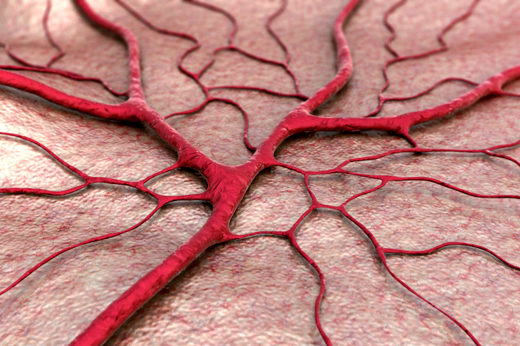The dose makes the poison. Emory cardiovascular researcher Kathy Griendling, PhD, was one of the first scientists to show how reactive oxygen species, once thought to be poisonous byproducts of metabolism, are essential cellular signals needed for life.
She and a team of Emory and Georgia Tech researchers were awarded a five-year, $8.9 million grant from the National Heart, Lung and Blood Institute of the National Institutes of Health to better understand how reactive oxygen species and inflammation can be both necessary for blood vessels to function, but detrimental in excess. The team's work will explore strategies for targeted intervention, possibly leading to new preventive approaches for conditions such as atherosclerosis and aortic aneurysms.
"This award highlights the core strength we have built at Emory in understanding how vital signals such as ROS function in vascular biology," says Griendling. "Our long-standing interest in this area is beginning to bear fruit in terms of translational approaches."
Griendling is professor and vice-chair of research and faculty development in the Department of Medicine within Emory University School of Medicine. The team includes Hanjoong Jo, PhD, John and Jan Portman professor in the Wallace H. Coulter Department of Biomedical Engineering at Georgia Tech and Emory University; W. Robert Taylor, MD, PhD, professor of medicine and director of cardiology at Emory University School of Medicine and Wallace H. Coulter Department of Biomedical Engineering at Georgia Tech and Emory; and Alejandra San Martin, PhD, assistant professor of medicine (cardiology) at Emory.
"This award represents a long-standing collaboration between investigators in cardiology at Emory and biomedical engineering at Georgia Tech and Emory," Jo says.
Using a well-developed model of rapid atherosclerosis induced by disturbed blood flow in mice, Jo's laboratory will investigate a potential drug target: bone morphogenic protein receptor 2 or BMPR2. The BMPR2 gene has been connected in human studies with pulmonary hypertension.
Griendling and San Martin are investigating Nox enzymes, which produce reactive oxygen species, and the Nox partner protein Poldip2's roles in aortic stiffening and smooth muscle metabolism and proliferation. Taylor is probing another potential drug target, the antioxidant enzyme catalase, which has been shown to modulate blood vessel stiffness and aneurysm formation.
The NHLBI grant also supports microscopy and animal resources supervised by Lula Hilenski, PhD and Bernard Lassègue, PhD, respectively. Both are assistant professors in Emory's Division of Cardiology.

